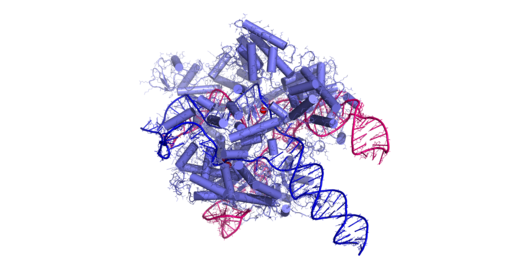Huntington’s disease is a well-known neurological disorder that is characterized by a loss of movement, coordination, and cognitive function. More than 200,000 people live with Huntington’s disease and more than a quarter million Americans are at risk of inheriting the diseases, but there is currently no cure. Scientists have recently been trying to develop a treatment using RNA-targeting CRISPR/Cas13d technology to eliminate toxic RNA that causes Huntington’s disease. CRISPR allows scientists to edit, add, and remove genetic material from specific places in the genome. This tool is based on a immune-defense mechanism from bacteria. Since there is a risk of editing a part of the genome unintentionally, studies have focused more on targeting RNA directly instead.
Huntington’s disease is caused by a mutation in a gene for the protein huntingtin. This mutation, known as a trinucleotide repeat expansion, causes cytosine, adenine, and guanine to be repeated many more times in the gene that normal. As a result, the protein that is produced can form toxic clumps in the part of the brain responsible for movement, which is called the striatum.
In AP Bio, we learned how genes are used to produce proteins that our bodies use. First, the RNA polymerase creates mRNA from transcribing DNA. A guanine nucleotide is added to the 5′ end, a poly-A tail is added to the 3′ end, and the introns are cut out. Then, the mRNA leaves the nucleus and goes to a ribosome for translation. The anticodon on the tRNA matches with the codon on the mRNA, which brings along the corresponding amino acid. The amino acid connects with the next amino acid to create a protein molecule. The additional CAG sequences in the huntingtin gene are transcribed onto the mRNA, which is then used to create a polypeptide. Since it is longer than normal, this protein’s shape will be deformed and will be toxic to the brain.
In neuronal cultures from patients with Huntington’s disease, scientists have used CRISPR to destroy mutant RNA molecules and clear out toxic protein buildup. Other genes were not affected by this treatment. When tested in mice, scientists found that the mice had better motor coordination and less toxic protein levels.
I chose this topic because I am very interested in how scientists can use mechanisms seen in other organisms to help treat human diseases.


Leave a Reply